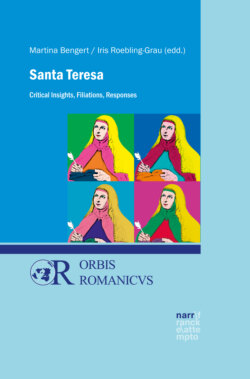Читать книгу Santa Teresa - Группа авторов - Страница 23
На сайте Литреса книга снята с продажи.
2. The Jewish Mystical Background
ОглавлениеThe beginnings of Jewish mysticism are bound to both the biblical vision of the priestly prophet Ezekiel and to cosmological speculations.1 The main features include the meaning and power of prayer; the concept of a hidden yet self-revealing God and His holy names; and the interdependency between our earthly world, with man at its center, and a world divine, as the cause of everything and the only true reality. While Jewish philosophy contemplates the most important concepts of Judaism, such as the commitment to the Torah, God’s covenant with Israel, and the idea of redemption in a reasonable or scientific way, the mystical approach conceives of the legends of the Jews, mythopoetic expressions in the Hebrew bible, and of the experience of God’s closeness, in short, in an unreasonable way. The mysteries of faith like the powerful presence of a transcendent God, his exceptional relation to Israel, or the cosmic significance of seemingly old-fashioned commandments are explained by means of figurative speech and symbolic language, including performative aspects. Two major trends emerged in the early history of Kabbalah. The first surfaced in the twelfth century in Southern France and was cultivated in medieval Spain in various circles. It refers to a theosophic system with ten manifestations (called “sefirot”) of God’s inner life which govern the world according to the religious compliance of Israel and the theurgical power of the Kabbalists. The second trend is represented mainly by the school of Abraham Abulafia in the thirteenth century, who focused on language mysticism and emphasized methods for meditation by means of letter combinations.
An independent force to join Jewish mystical thought was the messianic idea in Judaism.2 After the expulsion of the Jews from Spain in 1492, messianic expectations became the acute phenomenon of a crisis, resulting in more than one messianic movement (most notably the appearance of David Reuveni, who arrived in 1525 in Portugal and was conceived as the harbinger of the messiah among the conversos). To understand the religious excitement of such movements, one has to take into account that Jewish messianism can be characterized, among other things, by a strong call to repentance. Given the solemn atmosphere of Catholic Spain and the precarious situation of the conversos, a tendency to exaggerate the hope for redemption as well as a deep conviction of the supremacy of evil is quite comprehensible. Particularly between the years 1558 to 1560, eschatologically inspired dissemination of the Kabbalistic lore in the Jewish world found a deeply lasting visible expression in the first printing of Sefer ha-Zohar (Book of Splendor), in Mantua and Cremona. This coincided with the Catholic Reform reaching its peak at the final stage of the Council of Trent. This period crystallized the spiritual reform movement in Spain in which conversos played a significant role until their exclusion from all orders due to the principle of limpieza de sangre. This held true even for Teresa’s own congregation about ten years after her death, although she herself, needless to say, permitted the entrance of novices born to converso parents.3 In addition, many supporters of her convents had a converso lineage: up to one-third of Teresa’s foundations received donations from this group.4
